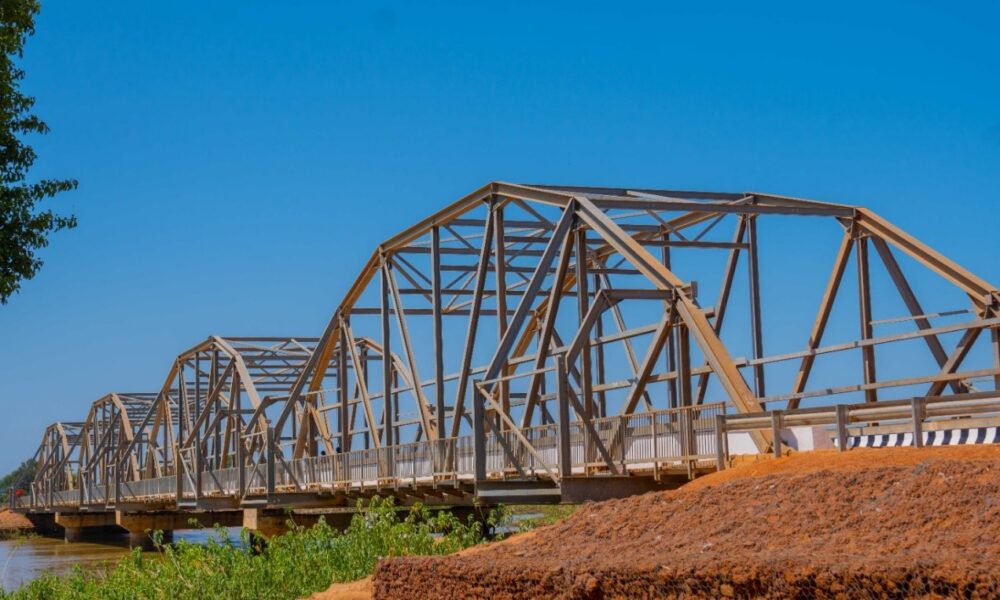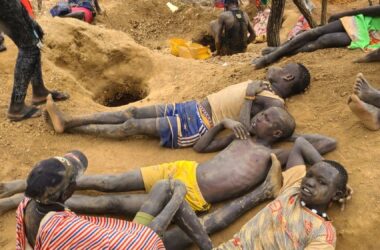By Philip Buda Ladu
European Union (EU) on Thursday handed over a newly constructed Nyamlel Bridge built across Lol River in Aweil West County, Northern Bahr el Ghazal State to the Ministry of Roads and Bridges.
Funded by the European Union and implemented by the United Nations Office for Project Services (UNOPS), the bridge will improve connectivity between Aweil North and Aweil West counties, previously isolated by water barrier.
The 163-meter-long bridge, spanning the Lol River, a donation from EU under the “European Union Trust Fund – Feeder Roads Project is expected to benefit over 750,000 people in the region.
It will facilitate the movement of people, goods, and services, as well as enhance security and trade opportunities.
Following its commencement in August 2020, the bridge was partially opened to the public in May 2023, and it is now completed and fully operational.
This crucial infrastructure will likely improve the living standards of people in the region, boosting economic activity and improving access to essential services like healthcare and education.
The European Union’s investment in the Nyamlel Bridge is part of a broader effort to support South Sudan’s development and resilience.
In addition to the bridge, the EU-funded project, worth 13 million euros, also included the construction of 44 kilometres of feeder roads and seven WASH facilities in Northern and Western Bahr el Ghazal states respectively.
These infrastructure improvements have directly and positively impacted the lives of more than 1.2 million people.
Speaking during the handover, Hon. Simon Mijok Mijak, the National Minister of Roads and Bridges, said the completion of this project has significantly enhanced security, enabling security forces to reach remote areas more quickly and preventing many from drowning while crossing the river.
“The bridge will also facilitate the movement of refugees and returnees from Sudan and boost trade by improving the transport of goods” Mijok said. “It is a tangible and valuable asset for local communities, providing safe, faster, and more reliable access to services and markets.”
Ms. Petronella Halwiindi, UNOPS Country Manager, applauded the EU for the generous funding.
She said the completion of these essential feeder roads and WASH facilities has improved access to clean water, healthcare, education and agricultural inputs.
“These enhancements combined have led to a reduction in transaction costs and the emergence of community mobile markets along the routes, contributing to improved livelihoods for local communities,” Ms Halwindi said. “The project and the bridge’s completion have elevated the living standards for more than 1.2 million women, men, and children.”
H.E. Timo Olkkonen, the European Union Ambassador to South Sudan emphasized that the decades of armed conflict and climate change have destroyed the existing road network in South Sudan.
“I am happy to witness the milestone achieved today in Nyamlel. The EU has been supportive of the development and resilience of South Sudan’s economy,” Ambassador Olkkonen said.
“The bridge and the feeder road improvements have made daily life easier for citizens and represent a tangible outcome of the EU’s Global Gateway Strategy, which invests in better connectivity infrastructure to promote sustainable development globally,” he added.
He urged authorities to ensure the maintenance of the infrastructure for the benefit of the people so that the value of this important development investment is not lost.
The Governor of Northern Bahr el Ghazal State, H.E. Simon Uber Mawut, among other stakeholders and guests attended the handover ceremony on Thursday.
As the bridge opens to the public, it marks a new chapter in the development of Northern Bahr-el-Ghazal State, bringing hope and prosperity to its people.
Both the EU and UNOPS expressed their commitment to supporting South Sudan’s development and resilience. They underscored the importance of maintaining the infrastructure to ensure long-term benefits for the community.




